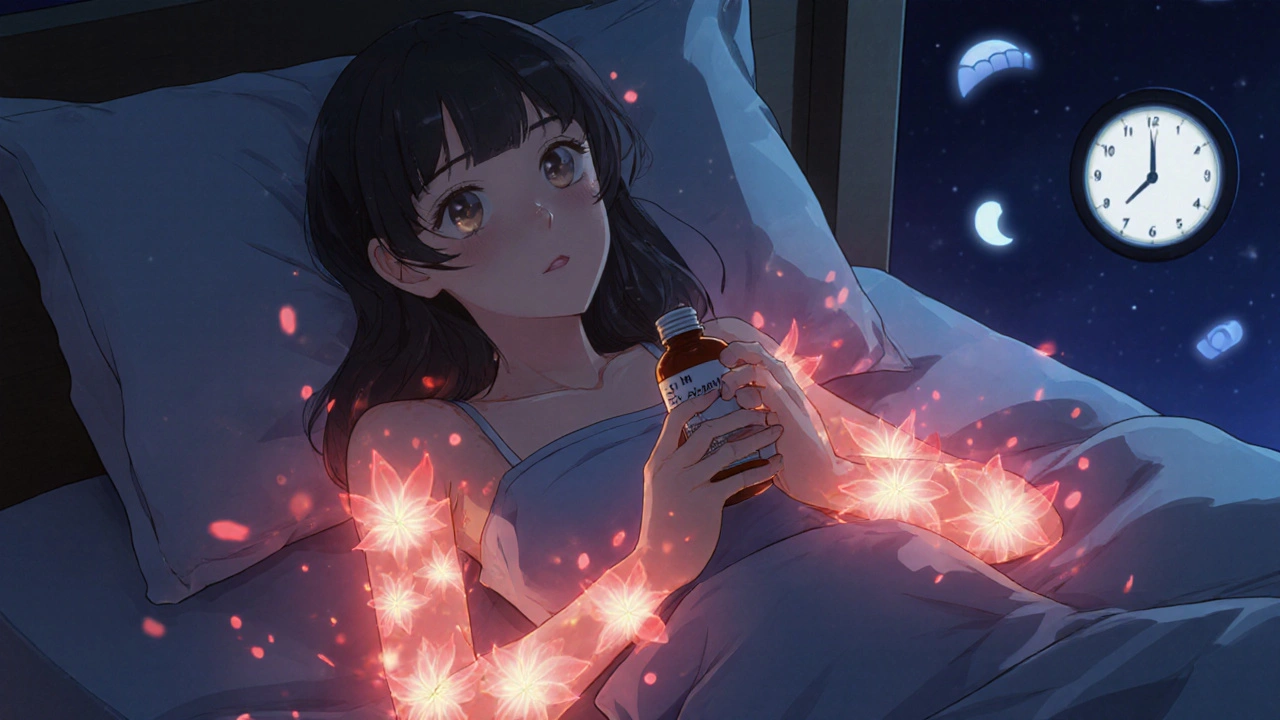Hives (Urticaria): Quick Help, Common Triggers and Treatments
Hives (urticaria) show up as itchy, raised red welts on the skin. They can be tiny or cover large areas. They flare and fade — one spot may disappear while new ones appear elsewhere. Most cases are short-lived, but some last weeks or become chronic.
Causes and common triggers. Allergic reactions to foods (shellfish, nuts, eggs), medications (antibiotics, NSAIDs), insect stings, and latex can cause hives. Non-allergic triggers include heat, cold, pressure, sunlight, viral infections, stress, and exercise. Sometimes no trigger is found; that’s called idiopathic urticaria.
Home relief you can try now. Start with a cool compress to reduce itch and swelling. Wear loose, breathable clothing and avoid hot showers. Over-the-counter second-generation antihistamines like cetirizine, loratadine, or fexofenadine are effective and have fewer side effects than first-generation drugs such as diphenhydramine. Take the recommended dose; if symptoms persist, talk to a pharmacist or doctor about adjusting the dose.
When hives are an emergency. If you have swelling of the face, lips, tongue, or throat, trouble breathing, fainting, or low blood pressure, call emergency services. Those signs may mean anaphylaxis, which needs immediate treatment with epinephrine.
Dealing with chronic hives. Chronic urticaria lasts more than six weeks and often affects quality of life. Your doctor may suggest higher doses of antihistamines, short courses of oral steroids for flares, or prescription options like omalizumab (an injection) when antihistamines fail. Blood tests can rule out rare causes, but extensive testing usually isn’t needed unless symptoms or history point to a specific trigger.
Practical tips for identifying triggers. Keep a simple diary recording foods, medications, stress, exercise, weather, and new products when hives start. Stop one suspected item at a time for several days to see if symptoms improve. Avoid taking alternative remedies unless you check ingredients — herbal products and supplements can also trigger reactions.
Children and hives. Kids often get hives after viral infections. Most cases resolve on their own. Use child-appropriate doses of antihistamines and contact pediatric care if hives are severe, recurrent, or accompanied by breathing problems.
Preventing recurrences. Avoid known triggers, manage stress with simple techniques (short walks, breathing exercises), and use gentle skincare. If you react to a medication, get a clear note or card listing the drug so future prescribers know.
Final practical note. Hives are uncomfortable but usually manageable. If over-the-counter measures don’t control symptoms, or if hives are severe or recurrent, see a healthcare provider. They’ll offer safer, more effective options and help you identify any hidden causes.
When to test and what doctors may do
If hives keep returning or last over six weeks, a doctor may order blood tests, thyroid checks, or allergy tests. They usually start with a medical history and targeted tests rather than a long blind search. Referral to an allergist or dermatologist is common for complex cases.
Quick flare checklist
Cold compress, non-sedating antihistamine, avoid triggers, note new meds/foods, seek emergency care for breathing or swelling. If chronic, track for 6 weeks and ask doctor about up-dosing antihistamines or referral.

Urticaria: Understanding Hives, Common Triggers, and How Antihistamines Work
Urticaria, or hives, causes itchy, raised welts that can last hours or years. Learn the real triggers, how antihistamines work, and what to do when they don’t help. Updated for 2025.
More Detail
How to treat skin irritations caused by hives and other skin conditions.
In my latest blog post, I delve into how to treat skin irritations caused by hives and other conditions. I explore various remedies, both natural and medical, to soothe and heal irritated skin. I also provide tips on how to prevent future outbreaks and maintain healthy skin. Understanding your skin and potential triggers can help manage these conditions effectively. It's a must-read for anyone dealing with persistent skin irritations or anyone interested in skincare in general.
More Detail